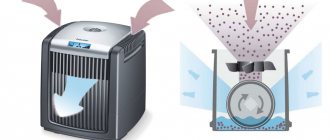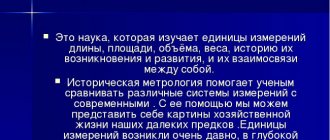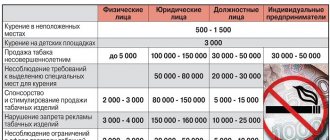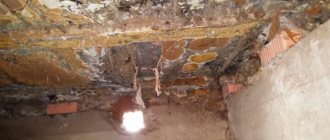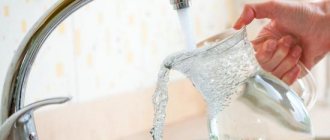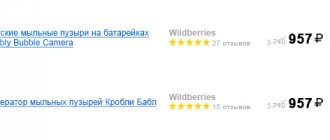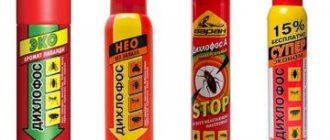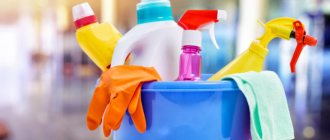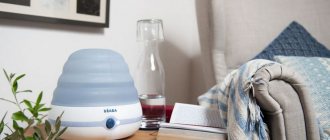- Why is supply ventilation with a filter the best solution for allergy sufferers?
- Filter type
Can the air itself be a hostile environment for humans? Maybe if you are allergic, and it is saturated with allergens - wool particles, plant pollen, dust or fungal spores. If we add to this industrial air pollution, it becomes clear that allergy sufferers and asthmatics need to take measures to protect themselves from the listed influences. The quality of their life directly depends on this.
Types of allergens in the apartment and symptoms upon contact with them
Agents that provoke such reactions in the body can be divided into “external” and “internal”. The former enter the house with air, the latter are a consequence of human activity, microorganisms and pets.
Don't have pets and do deep cleanings regularly? Unfortunately, this does not eliminate the presence of “internal” agents in the apartment that cause allergic reactions.
To stop exposure to external irritants (pollen, smog), just close the window. In contrast, “household” allergens are truly ubiquitous and much more difficult to combat.
These include:
- Insect irritants. Dust mites and their metabolic products, particles of chitinous shells of other microscopic insects. May cause itchy skin and rashes;
- Epidermal allergens. These are microparticles of human and pet skin. Cause itchy skin, cough, difficulty breathing;
- Fungus and mold. Fungal and mold spores, in the absence of any measures to destroy breeding sites, can cause respiratory diseases even in healthy people who do not suffer from allergies. Can cause conjunctivitis, runny nose, hives and sneezing attacks;
- Hair of dogs and cats. A strong irritant that causes a rash on the skin, runny nose, excessive lacrimation, and difficulty breathing. In particularly difficult cases, pet hair can cause anaphylactic shock.
“External” irritants (plant pollen) are no less dangerous. They can cause attacks of sneezing and coughing, runny nose, and sore eyes.
Precautionary measures
The active reagent is very dangerous to human health. People who use chlorine to disinfect a pool must follow the following safety rules:
- wear protective clothing made of cotton fabric, rubber gloves, shoes, an apron, goggles, and a respirator;
- chlorination is carried out in a well-ventilated area;
- Spillage of the active substance on skin and clothing is not allowed;
- containers with products are stored out of the reach of children and animals;
Attention! If chlorine is spilled, it must be diluted with a 5-10% solution of hyposulfite and soda. If the reagent comes into contact with the skin, wash the area thoroughly under running water and soap. - After chlorination, you must take a shower.
How to protect yourself from allergens at home?
Dust and microscopic insects. First of all, it is necessary to reduce the number of places where dust constantly accumulates: heavy curtains, carpets, velor furniture and other interior items. Large soft toys, books and other “dust collectors” will need to be placed in a closed space - in a closet, niche or containers. Wet cleaning should be carried out at least 2 times a week.
Using mattress covers, replacing down pillows with similar products made from other materials, and washing bed linen with special products are effective means of combating dust mites and other microscopic insects.
Mold. High humidity is a common cause of mold. The fight against it must begin by identifying the source of excess moisture and checking the quality of ventilation. To clean and remove mold from walls and ceilings, you can use solutions of soda, table vinegar, or special cleaning products.
Pet fur. If you do not plan to give away your pet, you will need to take the following steps:
- remove carpets and carpets on which wool regularly accumulates;
- maintain humidity in the apartment within 40-60%;
- walk your pet more often, and also bathe and comb it more often;
- limit the animal’s access to the kitchen and your room;
- prohibit him from jumping on the bed, chair and other upholstered furniture;
- Monitor the ventilation of the premises, ventilate more often.
"Street" allergens. To protect yourself from plant pollen that enters your home when airing, you should consider purchasing an air purifier that helps fight allergies. Now there are devices on sale that combine the functions of fresh air ventilation and an air purifier: they provide an influx of fresh air from the street without opening the window, and its simultaneous filtration.
Types of air purifiers for allergy sufferers
You can protect your home from allergens using a variety of technical solutions:
Air purifier - ionizer
It is a device that passes air flow through itself, while saturating it with negatively charged ions. Provides cleaning from suspended particles of dust and wool - thanks to the ionization process, they settle on any surface in the room. Some time after turning on the device, you will need to carry out wet cleaning.
This air purifier for allergy sufferers can be equipped with a built-in ozonizer that neutralizes toxins and harmful microorganisms. The advantages of the ionizer include cleaning efficiency, low energy consumption, and affordable price.
Purifiers with HEPA and carbon filters
An example of such a device could be a supply ventilation system that provides effective air exchange and filters the air flow from pollutants (including those that cause an allergic reaction). Models with HEPA filters are capable of retaining pollen, fungal spores, small dust particles, and wool. When installing a ventilator, there is no need to open windows for ventilation and at the same time, the entry of allergens into the house is blocked.
Deeper cleaning can be achieved by devices that, in addition to HEPA, also include a carbon filter that retains smoke and odors. This home air purifier for allergy sufferers requires filter replacement (the frequency of replacement depends on the degree of air pollution).
Devices using hydrofiltration (air washers)
Air purifiers of this type can be equipped with disc or cone water filters. In the first case, it consists of a series of thin plates with narrow gaps: rotating in water, they pass air flow through them and retain dust particles.
In a device with a cone filter, when water rotates, fog is formed from its smallest particles. Passing through this filter, the air is purified of the pollutants it contains.
It must be said that devices operating on the principle of hydrofiltration can do little to help allergy sufferers. The fact is that they are able to retain only large particles of contaminants.
Another disadvantage of such devices is the need to constantly clean and disinfect the water in the tank. If you do this irregularly, pathogenic microorganisms will begin to multiply in the purifier, and it itself will become a source of danger. If you would like to choose an air purifier for your apartment if you have allergies, it is better to consider other types of devices.
UV lamp
If the source of allergic reactions is microorganisms, then an ultraviolet lamp is a practical choice. With its help you can quickly disinfect a room. Ultraviolet light not only kills bacteria and viruses, but also strengthens the immune system. Despite the beneficial effects of UV radiation on the skin, the same precautions should be taken when coming into contact with it as in the bright sun.
Photocatalytic type devices
Another type of air purifier for allergies is a device in which UV radiation interacts with a catalyst, which is a titanium dioxide film. In the process, it breaks down organic matter in dust particles to a state in which it becomes harmless to allergy sufferers.
This cleaner has a simple design, is practical to use and has minimal power consumption.
How to choose an air purifier for your home
Which air purifier is best to buy for allergies? What should you consider when choosing such a device?
Most often, allergy sufferers suffer from dust and pollen. In this regard, an air purifier with a HEPA/F5/F7/F9 filter would be a win-win option: the cleaning efficiency of these pollutants is 100%.
Why is supply ventilation with a filter the best solution for allergy sufferers?
Proven effectiveness. Supply ventilation with a filter solves the main “allergic” problem - how to ensure the supply of fresh air without allergens and at the same time keep the windows closed.
Why are indoor cleaners useless for allergy sufferers? The fact is that the stuffiness in the room will sooner or later force you to open the windows for ventilation. You can purify the “internal” air as much as you like - there will be no point in this, since with each new ventilation the apartment will again be filled with allergens from the street. It's as pointless as carrying water in a leaky bucket.
“Inflow” with filters solves the problem radically: the windows are always closed, the house is fresh, allergens are not allowed access.
The effect of “self-purification” of the atmosphere in the house. When the ventilator operates, a constant flow of air is created, which is directed from the device towards the hood. In this case, internal pollutants (dust, skin particles) leave the room along with the air flow.
Budget savings. Have you ever considered the toll allergies take on your budget? These are the costs of a course of antihistamines (on average from 1000 to 5000 rubles), consultations with an allergist (2000-4000 rubles per appointment). In this case, expenses will most likely be repeated from year to year.
You spend this money to control allergies and improve your quality of life. Installing a ventilator with a filter will give the same effect! Considering these savings, the cost of it will pay off in 3-4 months. Then the device will start working “plus”.
Spend money on yourself, not on fighting allergies!
Chlorine storage conditions
Disinfecting chlorine-containing liquid concentrates, tablets, granules, powders, ready-made products and working solutions are stored in sealed containers. Manufacturer's labels and expiration dates must be kept on containers. The name, concentration, date of preparation, and other information are written on the bottles with the working solution.
Shelf life of chlorine-containing disinfectants:
- working solutions - 3–15 days;
- powder, granules, tablets - 2–7 years;
- liquid concentrate or ready-made product - 1–2 years.
The exact storage duration of drugs and working solutions is checked in the instructions for the disinfectant.
Storage conditions for chlorine-containing preparations:
- at a temperature of +18–20 ºC, freezing is unacceptable;
- in a dark, dry place;
- in places with good ventilation;
- away from fire, heating devices, precipitation;
- away from food, drinks, medicines;
- out of reach of unauthorized persons, animals, children.
In accessible places, place a first aid kit with first aid medications for poisoning and chemical burns with a chlorine-containing disinfectant.
How to make the ventilator work even more efficiently?
A good solution would be a tandem of a humidifier and a ventilator. An “inlet” with filters will provide an influx of fresh air, while simultaneously cleaning it from allergens. In turn, the humidifier will saturate it with moisture, bringing its content to the recommended 40-60%.
Filter type
Depending on the choice of device, this may be:
- HEPA (wool, pollen, spores, dust);
- Highly effective against dust and allergens with classes F5, F7, F9;
- coal (smoke, smells);
- photocatalytic (microorganisms, mold, dust);
- electrostatic (dust, wool).
Filters can be either replaceable or non-replaceable; they may require maintenance (cleaning, washing) or be maintenance-free. It’s worth remembering that OXY filters cost quite affordable 590 rubles. for F5 and 790 rub. for F7. Replacement once every 6-12 months.
Room area
This indicator must be taken into account when choosing the performance of the device: the larger the area of the room, the more powerful the purifier should be. It is better to choose “with a reserve”: for example, if the room area is up to 15 sq.m., then it is recommended to purchase a device with a productivity of at least 100 m3/hour.
Electricity consumption and noise level
Since air purifiers usually operate for a long time without stopping, the issue of energy consumption is very relevant.
The noise level during operation is another selection criterion. Air purifiers for apartments for allergy sufferers with low-noise, economical fans (30-40 dB) are now popular.
Review of recommended models from OXY
The OXY line of purifiers is represented by “active” and “passive” models. In the first case, we are talking about supply ventilation equipped with an electric fan. Such devices force outdoor air into the room and clean it of allergens and other pollutants.
“Passive” OXY can also be equipped with filters that retain dust and pollen: in this case, air exchange is ensured without a fan, due to the difference in pressure in the room and outside.
- Such a device is OXY 1 – the “junior” model of the line. It is equipped with an F5 allergen filter that captures dust particles, pollen and other types of agents that provoke allergic reactions. The low productivity of the device (60 m3) is compensated by its efficiency (works without electricity) and affordable cost - from 3,990 rubles. Wall mounting (can be done for final repairs).
- OXY 2 is a more functional and productive model. Equipped with an F5 dust filter against allergens, as well as a low-noise and economical fan made in Germany. Device capacity is up to 150 m3. It has smooth speed control and can be switched to “passive” mode (without power consumption).
- OXY 3 is a multifunctional device equipped with a dust (F5) filter (replacement is required once every 6-12 months). Provides a high class of purification from allergens, heating the air flow in the cold season using a ceramic heater that does not burn oxygen. Economical to operate (energy consumption 18-27 W), simple and easy to use.
- In addition to any configuration, it is possible to purchase a highly efficient filter with cleaning class F7, which will even more effectively clean the air of allergens.
An important advantage of OXY air purifiers for allergy sufferers is the modularity of the product. This means that you can always make an upgrade - for example, replace OXY 1 with OXY 2 or OXY 3. The replacement is done without drilling the wall, in just 1 hour. Warranty for all models is 2 years.
Chlorine-containing preparations for disinfection
For disinfection, chlorine-containing agents based on active chlorine-releasing (chloroactive) substances are used.
Use disinfectants based on:
- sodium benzenesulfochloramide;
- calcium hypochlorite;
- sodium hypochlorite;
- dichloranthine;
- sodium dichloroisocyanurate;
- trichloroisocyanuric acid.
Disinfectants are produced in the form of tablets, powders, granules, and liquid concentrates. There are also ready-made preparations in the form of solutions and pastes.
List of popular chlorine-containing disinfectants:
- Whiteness LAIMA PROFESSIONAL, 1 l - household chemicals for cleaning, disinfection and bleaching of chlorine-resistant products;
- Bath DZ, 5 l - concentrate for disinfection, bleaching and cleaning of sanitary rooms, plumbing fixtures, dishes, linen, animal toilets;
- Desolut F, 24 kg - disinfectant foam detergent for cleaning food equipment and surfaces;
- Sonix 100 - sodium dichloroisocyanurate tablets for all types of disinfection.
Bleach powder or solution is rarely used since a new generation of disinfectants has appeared.
There are two differences between modern and traditional preparations with chlorine. New chlorine-containing products disinfect contaminated objects; working disinfectant solutions are prepared less concentrated. At the same time, activity against all pathogens is maintained, odor and the amount of fumes are reduced.
